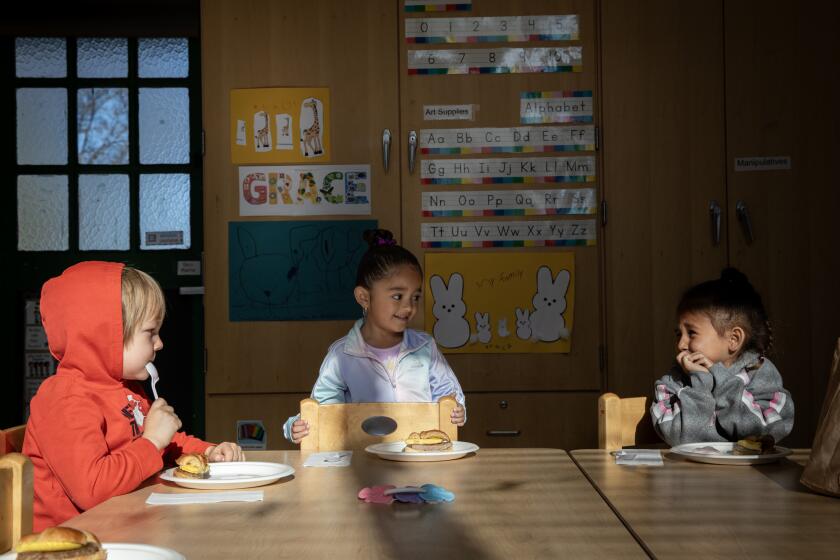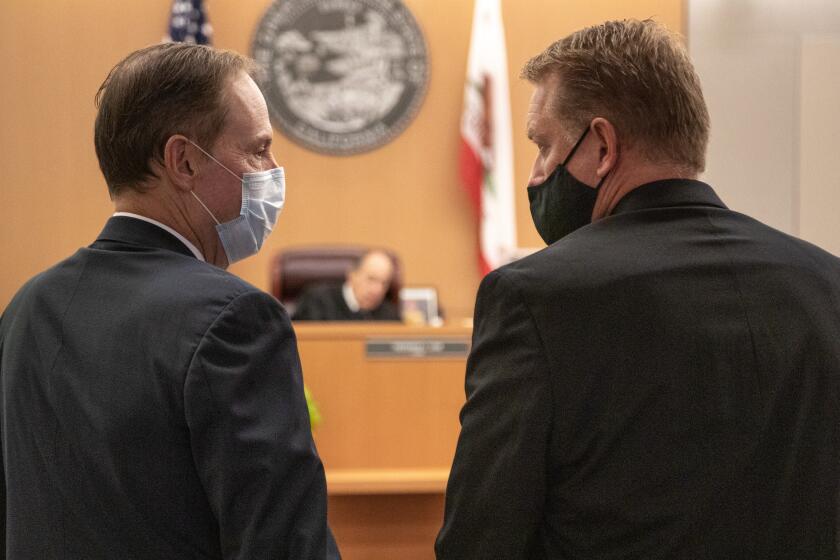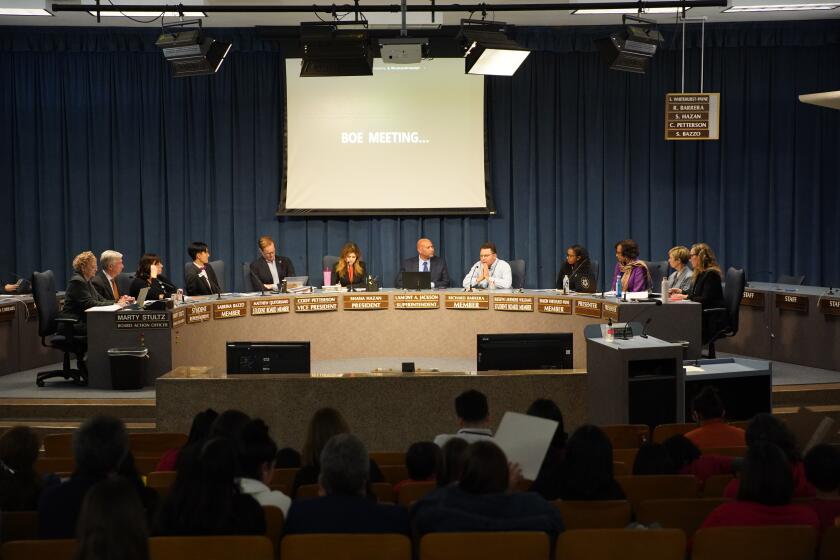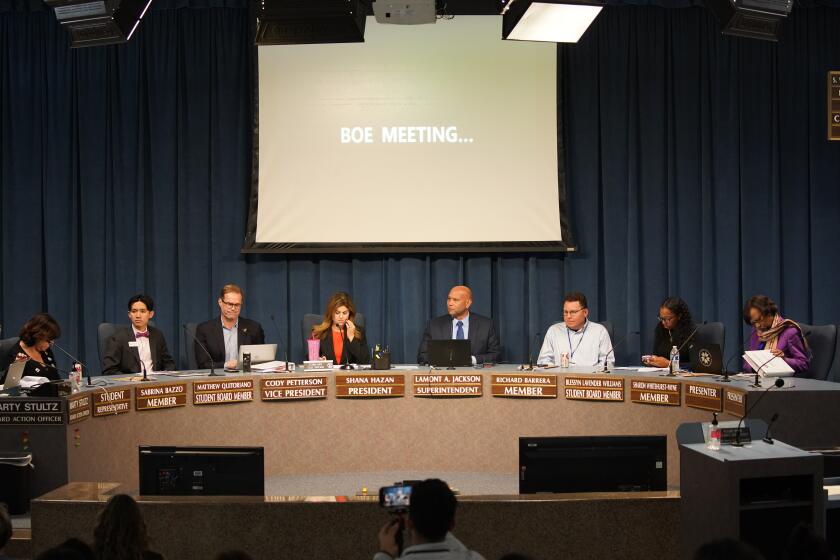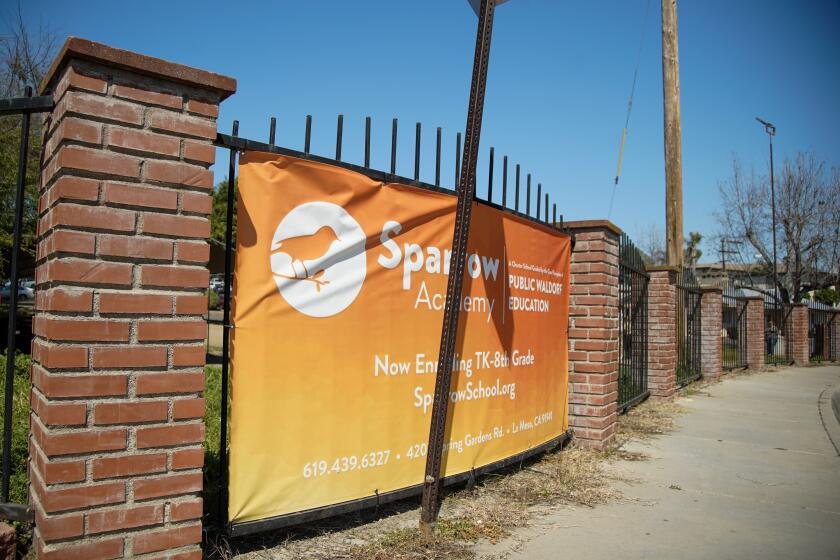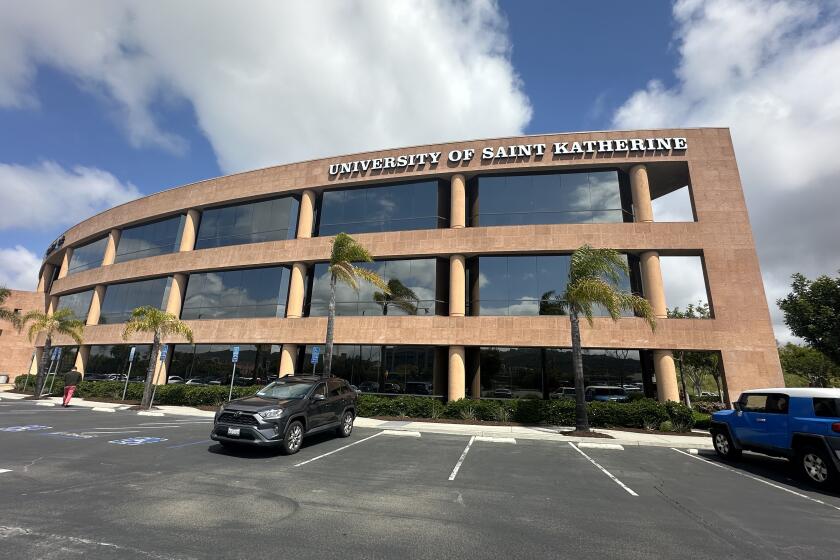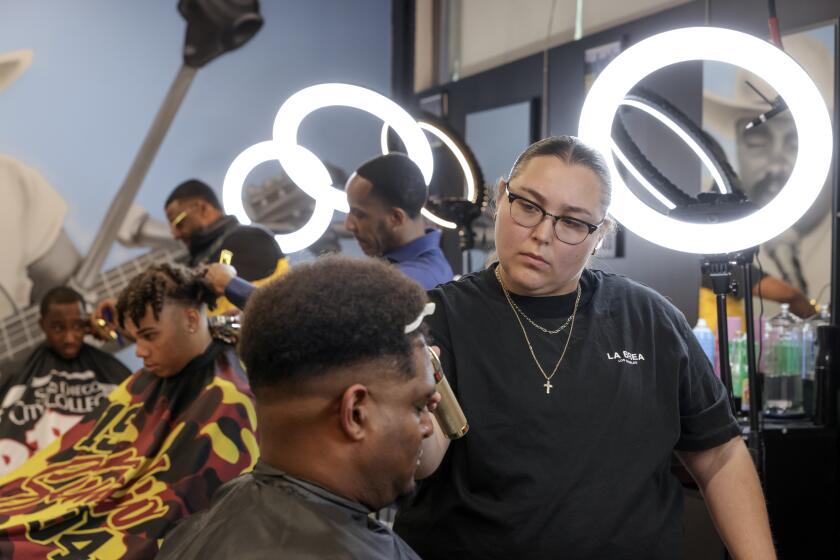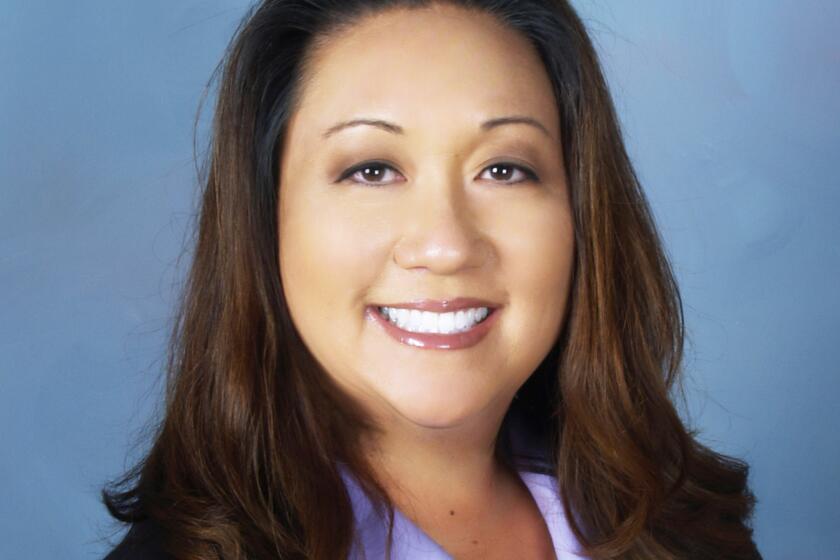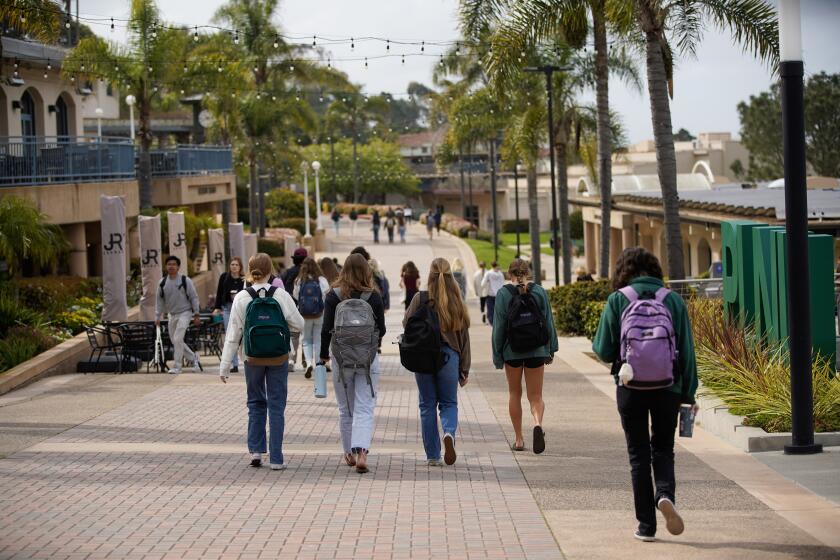New state rules for schools force some San Diego districts to cancel reopening dates
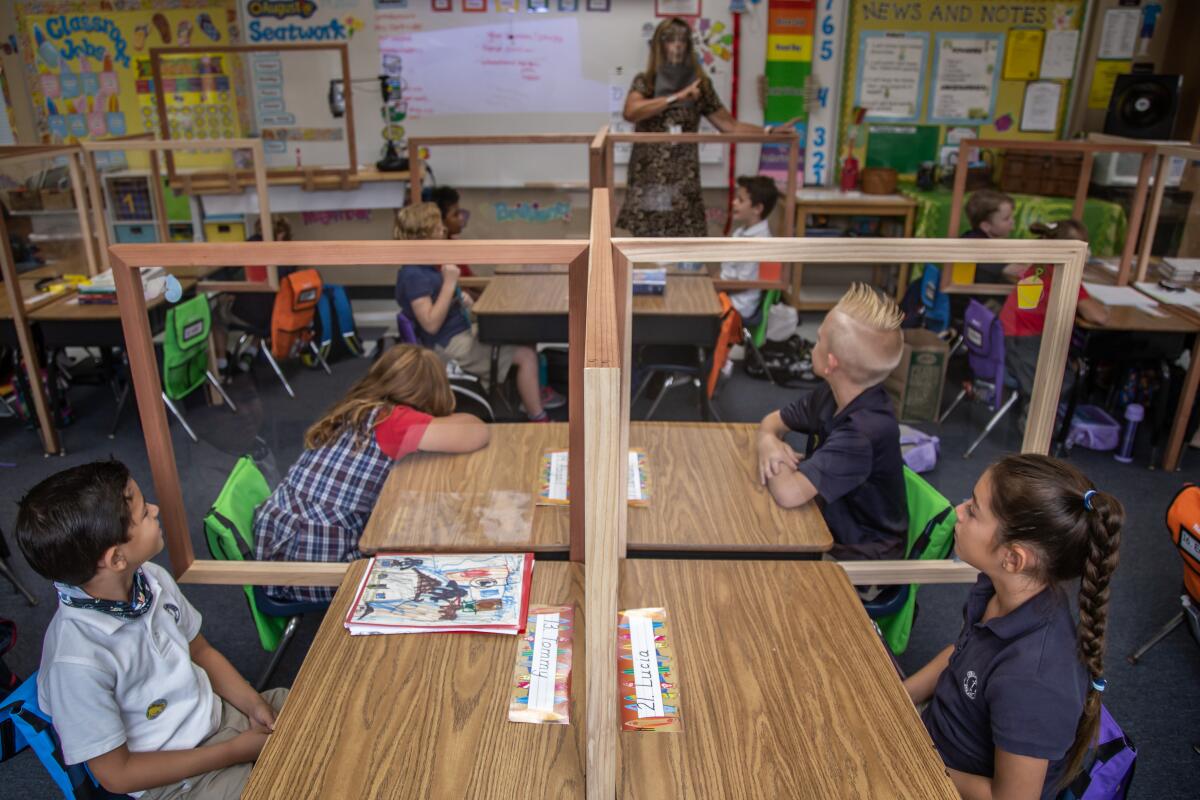
California just toughened the rules affecting how and when schools can reopen and offer in-person instruction.
Many big districts, like San Diego Unified, were already going to remain closed because COVID-19 rates are too high to allow reopening. But San Diego County school districts that were planning to reopen middle and high schools in the next few weeks now are postponing those plans indefinitely.
Vista Unified said it will continue elementary education in person, but it will keep middle and high school students in distance learning until it revises plans for those campuses to comply with new state rules, officials said.
Carlsbad Unified and San Dieguito Union High districts were scheduled to reopen secondary campuses at the end of January. Officials were reevaluating those plans Friday.
Poway Unified expected to open middle and high schools in February, but officials said new state rules have put those plans on hold until the county escapes from the most restrictive “purple tier” of COVID-19 conditions.
Monday the San Marcos Unified School Board decided to resume in-person learning for preschool through first grades, special education students and small groups of middle and high schoolers. But it will keep a majority of its secondary students home in distance learning.
Oceanside Unified School Board voted on Tuesday to keep all grades in virtual learning.
The bottom line of the new state rules is this: Elementary schools are not allowed to reopen until their county achieves a COVID-19 rate of 25 cases per 100,000 residents or lower.
For middle and high schools, the state’s rules have not changed: they are still barred from reopening until their county achieves a case rate of 7 per 100,000 or lower and gets out of the purple tier.
Individual schools that had reopened before San Diego County fell to the purple tier on Nov. 10 are allowed to remain open. But some state rule changes are forcing some of those schools to close until they bring their safety measures up to compliance.‘No end in sight’
San Diego County is far from achieving the case rates needed for all schools to reopen. And it is moving further away from those rates every week.
San Diego County’s rate was 70 COVID-19 cases per 100,000 residents last week, up from 53 cases per 100,000 the prior week.
“The first sign that things are getting better is we’ll start to see the daily numbers fall and the weekly totals fall,” said Bob Mueller, coordinator of special projects for the San Diego County Office of Education.
“But how fast they’ll fall is really a function of how much sacrifice we as a community are willing to make.”
The constant delays in school reopenings are frustrating parents like Lauren Halsted, a parent of two children at Pacific Beach Elementary in San Diego Unified.
She said it has bothered her to watch kids in private schools and some in other parts of the county like Del Mar, Encinitas and Solana Beach go back to school in-person, while she has no idea when her kids will go back to school.
San Diego Unified didn’t reopen schools when it had the chance, before the county fell into the purple tier. Its schools have been closed to almost all students since March.
“So now we’re kind of stuck,” Halsted said. “The kids have been out of school for almost a year, and there’s no end in sight.”
New rules
Some school districts, including San Dieguito, were hoping they could begin to offer in-person instruction to all students this month, even for middle and high school students.
San Dieguito argued it could do so because it claimed it had already “reopened” — it was serving small groups of students on campus, which is allowed in the purple tier.
For months the state did not give a clear definition of what constituted “reopening.” San Diego County, meanwhile, was advising schools they qualified as “reopened” even if they were only opening to small groups of students.
A conflict broke out between San Dieguito district leaders and the teachers union, which sued to stop the reopening plans. On Thursday the state finally set the definition for a “reopened” school: a school that has offered in-person instruction to all students in at least one grade level.
That means no San Dieguito school will be able to reopen until the county gets out of the purple tier.
Here are some other notable changes to California’s school reopening rules:
- K-12 students in all grade levels must wear a mask at all times except for meals, snacks and naptime. Previously, state rules said only students in grades 3 and up had to wear masks. Students with proven medical exemptions still do not have to wear masks.
- Student chairs in classrooms must be spaced 6 feet apart. Schools can have distancing of as little as 4 feet if they can prove to a health officer they made a “good-faith effort” and found it impossible to space chairs 6 feet apart. Previous state rules did not set a minimum requirement for distancing.
- The state no longer recommends regular disinfection using chemical agents, because it was found to not significantly reduce COVID-19 transmission and because chemicals can pose health risks to children. But “high-touch” surfaces should still be cleaned with soap or detergent daily.
- All students and staff should be screened for symptoms daily — before they leave for school, not on campus, as many schools had been doing.
The changes reflect more recent research and data about COVID-19 transmission in schools and among children than officials had in the beginning of the pandemic.
Local experts have long pointed to universal mask requirements and distancing as the most important safety measures to prevent the spread of coronavirus. The revised state guidelines reflect that.
Research studies have suggested that young children are less likely to get COVID-19, and adult-to-adult transmission is much more common than child-to-adult transmission, said Naomi Barbach, lead for the state’s school reopening team, in a briefing Thursday.
Another study cited by Barbach show that gatherings and lack of consistent mask use at school were associated with COVID-19 infection, but children attending school in-person was not.
Middle and high schools have higher risks of on-campus transmission than elementary schools partly because secondary schools make students switch classes and change teachers.
Mueller said a multi-layered strategy of safety measures — including regular COVID-19 testing, universally mandated masks and social distancing — can significantly lower the chances of on-campus COVID spread for younger kids.Change of plans
Vista Unified had reopened all its schools in October, with full-time on-campus learning for about half of its 20,000 students.
COVID-19 cases at its campuses forced officials to place hundreds of students on quarantine, temporarily close campuses and return to distance learning for middle and high school students before winter break.
The district had planned to reopen middle schools on Jan. 19 and high schools on Jan. 26, but the new state rules will require additional mitigation measures, officials said.
Poway Unified School District had already delayed reopening plans following the post-holiday spike in COVID-19 cases because it could not adequately staff classes for a planned reopening on Jan. 19. On Thursday the Poway school board voted to suspend on-campus learning for preschool and special education programs until Jan. 19 and elementary schools until some time between Jan. 25 and Feb. 1.
Escondido Union High School District voted Tuesday to keep high school students in virtual learning until at least April 16 but allow small groups or “learning pods” to study on campus.
Get Essential San Diego, weekday mornings
Get top headlines from the Union-Tribune in your inbox weekday mornings, including top news, local, sports, business, entertainment and opinion.
You may occasionally receive promotional content from the San Diego Union-Tribune.


